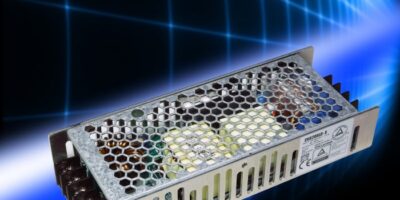Microprocessor adds Linux distribution to accelerate IoT innovation
As part of its commitment to 10-year industrial-grade supply, STMicroelectronics has introduced the STM32MP1 microprocessor series with Linux distribution. According to STMicro, the multi-core STM32MP1 architecture is particularly suited to open-source software-based applications in real-time and power-constrained sub-systems
It also reduces development time using OpenSTLinux mainlined, open-source Linux distribution and the established STM32Cube ecosystem
STMicro has applied its Arm Cortex expertise to expand the capabilities of its STM32 microcontroller to applications which require more performance, resources and large open-source software. The STM32MP1 multi-core microprocessor series has compute and graphics support combined with power-efficient real-time control to support developers of industrial, consumer, smart home, health and wellness applications.
The STM32MP1 series microprocessor uses the STM32-family ecosystem from ST and its partners, including tools and technical support.
“The STM32MP1 brings the strength of the STM32 experience to applications that need MPU compute and graphics support, combined with power efficient real-time control and high feature integration,” said Ricardo De Sa Earp, general manager of STMicroelectronics’ microcontroller division. “Our commitment to consolidating open-source Linux software and microcontroller development support, combined with the longevity that consumer-oriented alternatives cannot equal, establish solid confidence in STM32MP1 for embedded MPU projects,” he adds.
Designers can use the STM32MP1 microprocessor series to develop a range of applications using the STM32 heterogeneous architecture that combines Arm Cortex-A and Cortex-M cores. The architecture performs fast processing and real-time tasks on a single chip, always achieving the greatest power efficiency, says STMicro. For example, by stopping Cortex-A7 execution and running only from the more efficient Cortex-M4, power can typically be reduced to 25 per cent. From this mode, going to standby further cuts power by 2.5k times – while still supporting the resumption of Linux execution in one to three seconds, depending on the application.
The STM32MP1 embeds a 3D graphics processor unit (GPU) to support human machine interface (HMI) displays. It also supports a wide range of external DDR SDRAM and flash memories. The large set of peripherals can be seamlessly allocated either to Cortex-A / Linux or Cortex-M / real-time activities. The STM32MP1 series is available in a range of BGA packages to minimise PCB cost and use the smallest board space.
The release of OpenSTLinux distribution has already been reviewed and accepted by the Linux community: Linux Foundation, Yocto project and Linaro. The distribution contains all the essential building blocks for running software on the application-processor cores.
Enhanced STM32Cube tools, upgraded from the STM32Cube package for Cortex-M microcontrollers, accelerate microprocessor development using Arm Cortex-A-core MPUs.
Two evaluation boards (STM32MP157A-EV1 and STM32MP157C-EV1) and two Discovery kits (STM32MP157A-DK1 and STM32MP157C-DK2) will be available through distribution channels in April.




